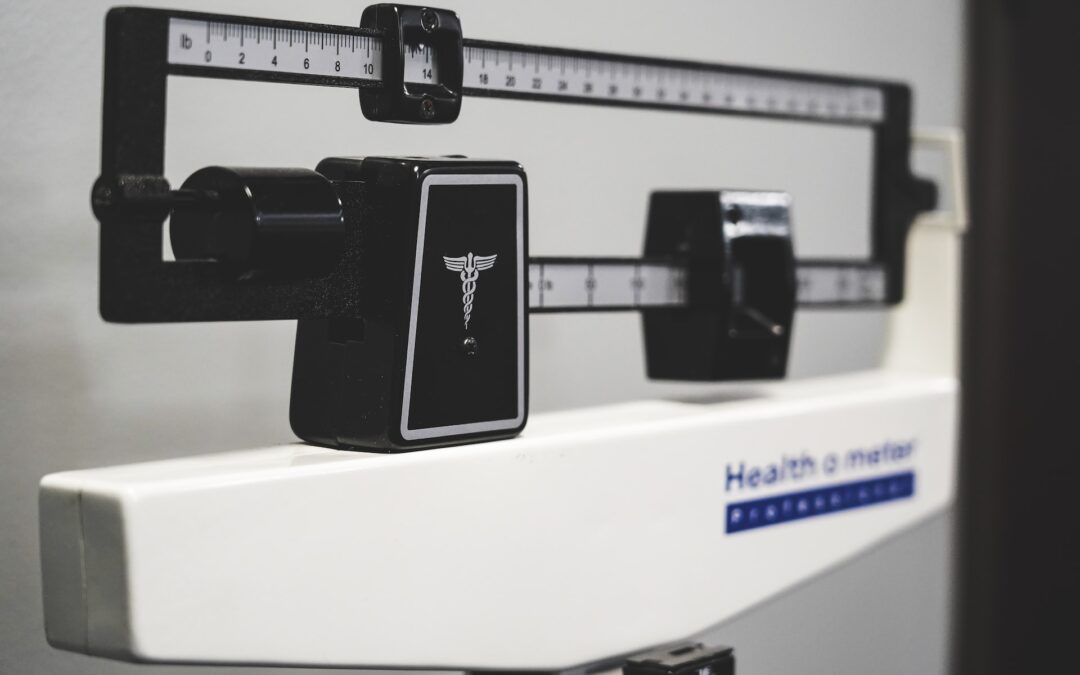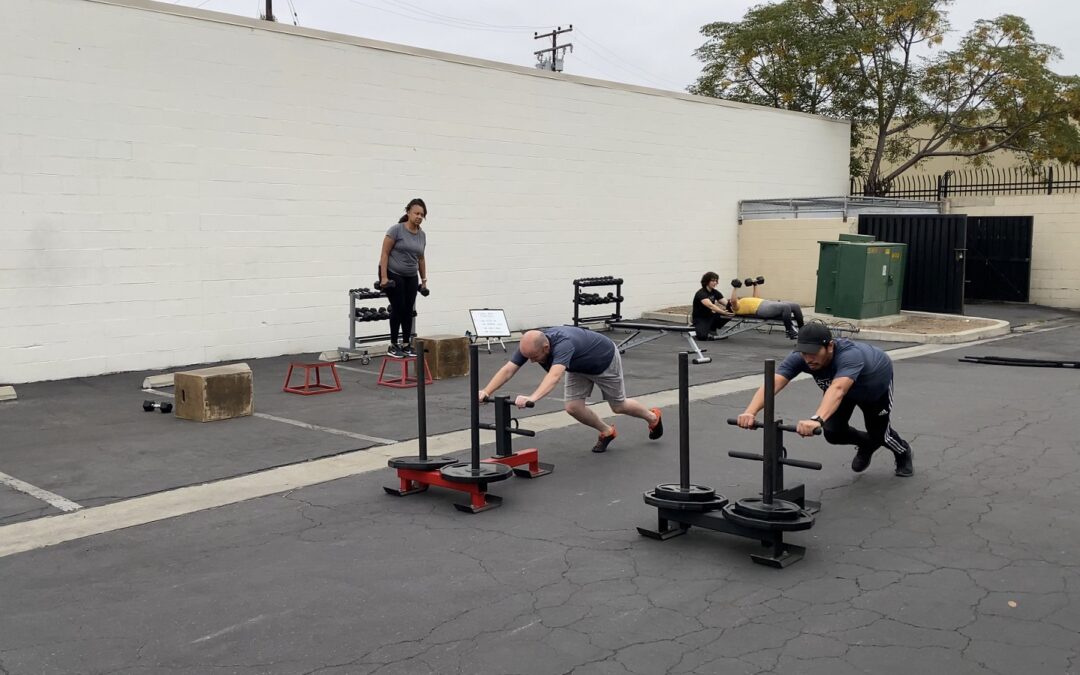
by David Minishian | Dec 27, 2022 | Exercise, Lifestyle Habits, Nutrition, Sleep, Weight Loss
Long-term weight loss success is something that many of us strive for but don’t always achieve. It requires dedication, hard work, and a commitment to stay the course over an extended period of time. But if you want to make lasting changes in your health and body composition, it can be done by executing a few simple strategies.
Let’s cover 6 easy strategies for long-term weight loss success that you can start using today:
- Set realistic goals
- Track your progress
- Find healthy substitutes for unhealthy foods
- Exercise regularly
- Make lifestyle changes
- Get adequate sleep
1. Set Realistic Goals
The first step towards achieving any goal is setting realistic expectations from the beginning, so that you don’t become discouraged or overwhelmed by the process ahead of you. When it comes to losing weight, set yourself up for success by creating achievable objectives such as running three times per week or eating five servings of vegetables each day rather than aiming to lose 10 pounds in two weeks or completely eliminating carbs from your diet right away (unless advised by a doctor). Setting these types of actionable milestones will help keep you motivated while also making sure that the journey isn’t too overwhelming!
2. Track Your Progress
Keeping track of your progress helps keep things in perspective and gives you tangible evidence when reviewing how far you have come on your journey towards long-term weight loss success. You may find tracking apps helpful here; they allow users to log their meals/workouts along with other relevant details like calories consumed/burned etc. Having access to these data points can be useful for analysis later on down the line – all without having to manually record everything! Additionally, consider taking photos at regular intervals throughout this process so that once again there’s physical proof showing where you’ve been compared to where you are now. Pictures are great motivation during those more challenging moments!
3. Find Healthy Substitutes For Unhealthy Foods
One way people often sabotage their own efforts when attempting long-term weight loss is by failing to swap unhealthy habits with healthier alternatives – leading them back into their old ways eventually causing them to give up altogether! If there’s something specific out there which isn’t conducive towards one’s health & fitness goals, try finding suitable replacements instead (i.e. swapping sugary snacks like candy bars or chips with nuts/fruit). Doing this allows individuals to maintain variety within their diets while still adhering closely enough to the dietary guidelines they have set – ensuring longevity along this journey!
4. Exercise Regularly
Alongside consuming nutritious foods regularly, exercise plays an important role in achieving long term results when trying to reduce body fat. This doesn’t mean having to hit the gym every single day though; even just doing 30 minutes of intentional activity twice weekly combined with walking whenever possible is a fantastic start when done consistently over time. The goal is consistent activity to raise the metabolic rate and make it easier to remain in a caloric deficit. You don’t need to workout for 2 hours a day, 6 days a week to see results.
5. Make Lifestyle Changes
Losing body fat involves much more than simply exercising & eating well; changing lifestyle habits must occur in order to achieve the desired outcomes. This could include swapping screen time for family walks, eating out for home cooked meals, or alcohol for calorie free beverages. Of course, the changes all depend upon the individual situation, but the lifestyle habits need to change to properly support a leaner, fit person. Making gradual adjustments overtime will enable a person to adhere to the necessary measures required to increase their chances of having success!
6. Get Adequate Sleep
Finally getting sufficient rest is a critical component for maintaining good overall health. It’s important to pay attention to the amount of hours we’re sleeping at night when looking to shed a few extra pounds off! Not only does a lack of proper sleep lead to fatigue, but it increases cravings for sugar based products by affecting the hormones responsible for regulating hunger and satiety levels, both which play crucial roles in deciding whether someone ends up gaining or losing weight. Make sure to get plenty of shut eye whenever possible to ensure optimal functioning for the days ahead!

by David Minishian | Dec 18, 2022 | Exercise, Fitness, Injury Prevention, Strength Training
Steps to avoid injury and improve results.
Before jumping into a workout, consider starting with a warm up and ending with a cool down.
Although these additional movements surrounding your workout seem repetitive and unnecessary, they are not pointless.
Warm Up
A warm up is intended to decrease your risk of injury and improve exercise performance by forcing blood into your muscles and stimulating your nervous system.
You can think about a warm up like getting to a cool pool.
If you jump in, the sudden difference in temperature will shock your body. This “trauma” increases your blood pressure, heart rate and breathing rate rapidly, and in a worst-case scenario the shock could trigger a heart attack. Simply put, our bodies don’t like abrupt changes.
A warm up is like slowly walking into the pool, stopping to adjust to the temperature change, so your body can gradually adapt and reduce the risk of being shocked. The warm up lets your body know that it will be put under stress and gives it a “warning” to adapt. As the body prepares, it reduces the risk of injury from the stressor.
“So as long as I warm up I will never get injured?”
No, injuries may still happen, but warming up significantly reduces the risk of injury.
The best warm ups raise your heart rate and engage the targeted muscles of the workout. The most effective way to target the right muscles is by mimicking the same movement patterns of the core exercises in your program.
For example, warming up with body weight squats before starting your Barbell Back Squat set is an ideal practice.
Cool Down
But what about after the workout?
After training you are sweating, your heart is pumping, and maybe you just hit a new PR on your deadlift! The last thing you want to do is walk out of the gym and sit in your car for 10-30 minutes driving home.
This is where a cool down is important.
A cool down helps with the recovery process by removing lactic acid build up and reducing DOMS, delayed onset muscle soreness. When you cool down, you recover faster. The faster you recover, the more you can train. The more you can train, the better results you get.
Cooling down can improve your training results.
A few cool down approaches coaches use are stretching techniques (which I will be explaining in next week’s newsletter), core exercises, isolations, and even light cardio movements.
All of these techniques can be helpful in cooling the body down.
So don’t skip your warm up and cool down…they are important.

by David Minishian | Dec 13, 2022 | Exercise, Fitness, Strength Training
How to use three pieces of equipment for resistance training.
Starting a resistance based training routine can be simple and effective with minimal equipment. Whether you’re at home or in the gym, there are only a few pieces of equipment you need.
In a gym it can feel overwhelming with so many equipment options. You don’t need to use everything. The free weight section alone has all the equipment to implement a fantastic program from the extremely versatile dumbbells to more specific tools like kettlebells and barbells.
There is NO WRONG choice when it comes to equipment. The trick is to use the equipment that is going to benefit you most within your current workout plan and move you closer towards your goal.
Resistance Based Training Equipment
Dumbbells, kettlebells, and barbells can be used to complete each of the six fundamental exercises included in a training program. Let’s use the chest press exercise as an example to show when you might use each piece of equipment.
Dumbbells
When training dumbbells are foundational to have in a resistance based program. Dumbbells can be used to achieve muscular endurance, hypertrophy, or strength. In the chest press movement, dumbbells allow you to fully contract the chest muscles by bringing your arms and hands closer together at the top of the movement. Since dumbbells can be rotated in your hand, a neutral hand position can be used to reduce stress on the rotator cuff, possibly allowing someone with shoulder discomfort to complete the movement with little to no pain. Completing the chest press with dumbbells is also a safer choice when going heavier without a spotter as the weights can be dropped to your sides if you fail to complete a repetition. After you perfect your form with dumbbells, use other free weight equipment to challenge yourself in new ways.
Kettlebells
While kettlebells are used in the same ways as dumbbells, for specific movements like the chest press the weight is off-centered. This means controlling the kettlebell throughout the movement requires a higher level of muscular coordination. The stress place on the smaller stabilizing muscles will strengthen them, which will help improve chest press performance when using dumbbells or a barbell.
Barbell
When you want to maximize strength or power, the barbell is your best friend. The barbell allows you to lift more weight which helps improve overall strength. Since the bar requires a fixed hand position, you can also exert less controlled quick movements on the weight to build power. For the chest press the bar will require a spotter during heavier lifts. Safety comes first. Although the bar is specifically better for strength and power, it is excellent for hypertrophy, building muscle, too.
There is no wrong choice when it comes to which equipment you choose to grab. As long as the form is good, weight is challenging, you are progressing the program and having fun, the results you want are bound to follow.

by David Minishian | Dec 11, 2022 | Exercise, Fat Loss, Lifestyle Habits, Nutrition, Sleep, Stress Management, Supplements, Weight Loss
Are you looking for ways to kickstart your metabolism and burn fat faster? If so, this article is for you. In this post, we’ll discuss seven easy-to-implement steps that can help get your metabolism up and running in no time. We’ll also share some tips on how to keep it going strong over the long haul. So let’s jump right in!
1. Increase Your Protein Intake
Protein is an essential nutrient that helps to build muscle mass and increase your metabolic rate. Studies have shown that people who consume higher amounts of protein tend to burn more calories than those who don’t eat as much protein. Aim for at least .5 gram of protein per pound of body weight each day. If you’re lifting weights, aim for 1 gram of protein per pound of lean body mass (you’ll need to know you’re body fat percentage to find your lean body mass). Good sources of protein include lean meats such as chicken breast or fish; eggs; dairy products like yogurt or cottage cheese; legumes like chickpeas or lentils; nuts and seeds; tofu; quinoa; tempeh; spirulina; etc.
2. Eat More Fiber-Rich Foods
Fiber helps keep you feeling full longer which can help prevent overeating and snacking between meals – both key factors when trying to lose weight. It also aids digestion by helping food move through the digestive tract slowly which can promote a healthy metabolism. Aim for 25–30 grams of fiber daily from foods such as fruits and vegetables, whole grains (such as oats), beans/legumes (like black beans), nuts/seeds (almonds and flaxseeds are great!), and avocados. Refined and processed foods lack fiber. To consume more fiber rich foods, a good general rule is to gravitate towards whole foods with minimal processing.
3. Stay Hydrated & Reduce Sugary Drinks
Drinking plenty of water throughout the day not only hydrates our cells but also helps with digestion. Being hydrated makes it easier for our bodies to absorb nutrients from food while eliminating toxins at the same time! As an added bonus: drinking enough water will help reduce strong cravings that are often thirst mistaken for hunger leading us down a path toward unhealthy snacks instead of healthier choices. Additionally try to reduce the consumption of sugary drinks like sodas which contain empty calories that won’t nourish our bodies. If soda is consumed regularly over time, this liquid candy will make it more difficult to lose fat and adds extra pounds onto our waistlines…not exactly what we want when trying to slim down.
4. Get Moving & Exercise Regularly
Regular exercise has been proven to not only boost one’s mood but also increases our metabolic rates over periods lasting anywhere from 24 to 72 hours after physical activity has taken place. This means even after having finished exercising there’s still benefit being gained simply because we’ve made exercise part of our weekly routine. As a bonus, if high intensity interval training (HIIT) workouts or resistance based training are used during these exercise sessions our metabolic rate increases significantly more. Moving consistently is the first goal, but the right type of exercise or training can maximize our efforts in terms of the time spent working out – it’s a win-win situation all around!
5. Prioritize Sleep Quality
Getting adequate sleep every night plays a major role in keeping hormones balanced, which helps regulate the appetite and reduces cravings associated with late night snacking binges. Individuals who suffer from a chronic lack of sleep often have unwanted weight gain despite the best intentions to move more and eat fewer calories. Aiming towards 7–9 hours of sleep nightly should be considered mandatory, especially considering how important quality restful sleep is towards overall health. With enough sleep a well rested body can more consistently maintain the positive eating habits that support a caloric deficit. This deficit is required to maximize the rate of fat loss!
6. Reduce Stress Levels
Finding ways to reduce stress levels may seem difficult at first; however there is a huge pay off in practicing stress reducing activities. Living in a state of constant stress promotes higher levels of cortisol. This hormone when chronically elevated can decrease our ability to lose fat. Not only does the hormone physically promote fat storage, but it can inhibit the mental clarity and the decision making ability required to stay on a diet plan resulting in half hearted attempts at staying the course. Luckily, a few simple mindfulness activities when practiced regularly can prevent a state of chronic stress so your body can continue being a fat burning machine. Deep breathing exercises are one proven method that is effective at recentering our body and mind. There are a variety of ways to practice deep breathing as seen in yoga, tai chi, and pilates, but the principle practice remains the same. Start by taking a deep breath in, holding it for 5 seconds, then slowly exhaling. Do this with your eyes closed paying attention to your body and breath. After only 10 repetitions this easy technique can significantly reduce stress and bring clarity back to your body and mind.
7. Supplement Smartly
Supplements aren’t required when creating a healthy lifestyle, but they may offer additional support depending upon individual needs. Whether it’s a protein powder, stimulant, creatine, probiotic, vitamin, mineral, or herb there may be a certain product or combination of products that prove beneficial. However, there are no supplements that should be applied to everyone. When determining if a supplement is right for you, consult your coach and medical team to ensure using the product will safely and effectively supplement your existing diet to help you meet your nutritional needs.



